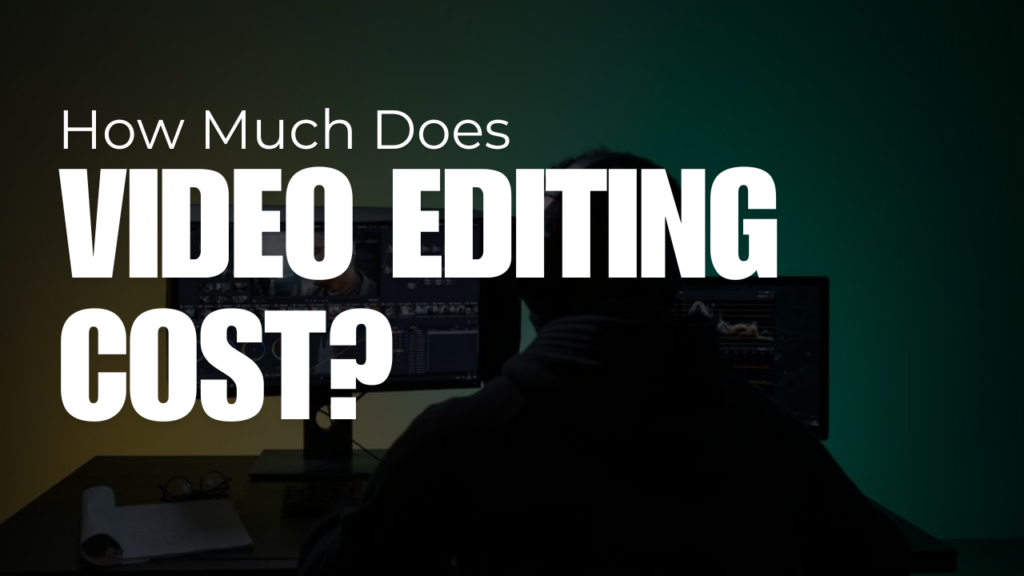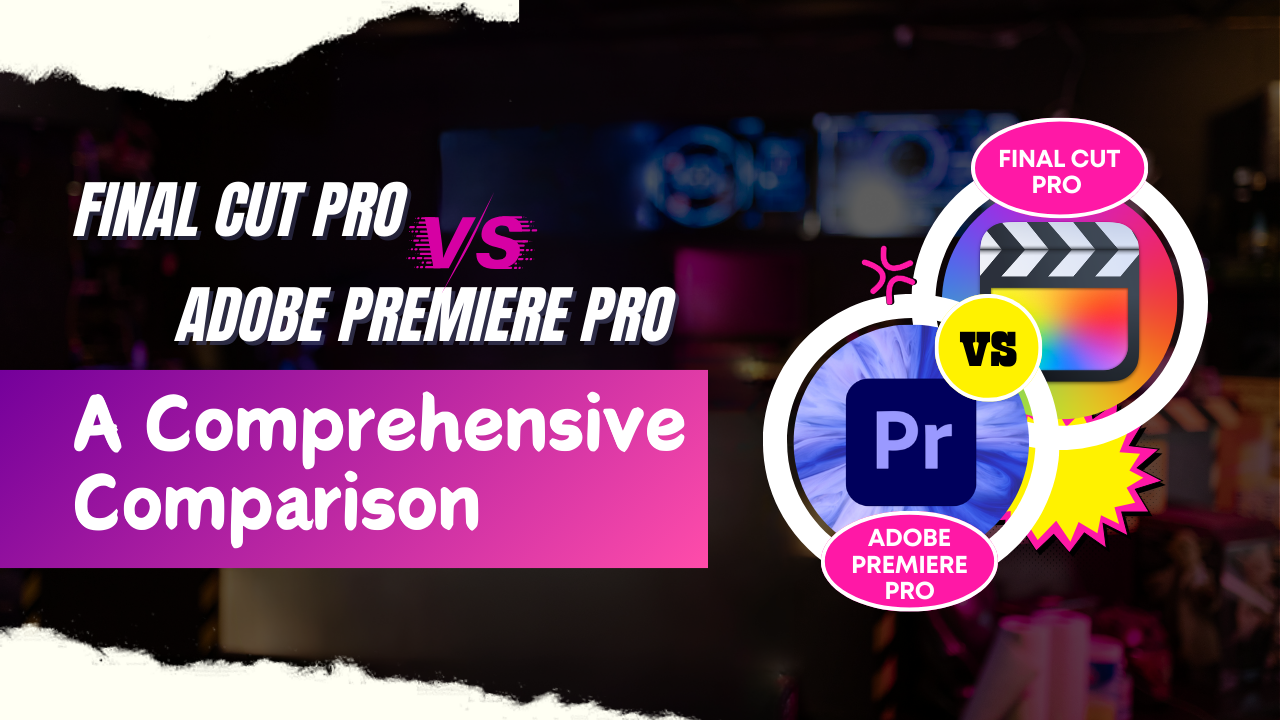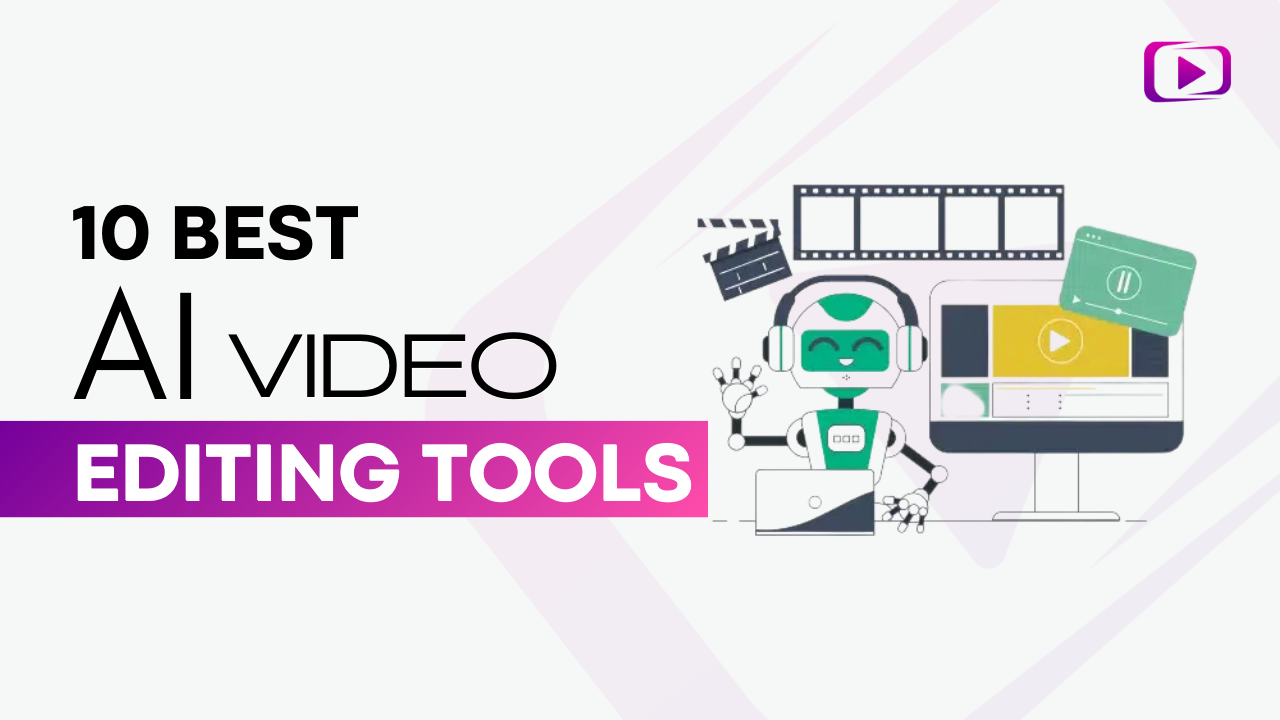Ever sat there with hours of raw footage, a killer idea, and thought, How much will it actually cost to get this edited? You’re not alone.
Whether you’re making a promo video, a vlog, or the next viral TikTok, understanding the cost of video editing can save you from those ‘I had no idea it would be this much!’ moments later on.
And here’s the thing—video editing isn’t one-size-fits-all. What you pay can depend on a bunch of things, like how fancy you want those transitions, the amount of footage you have, or even how quickly you need it done.
By knowing what to expect, you can set a budget that matches your vision and still leave room for those little extras that make a video pop.
So, let’s break down the real deal behind video editing costs, so you can go from wondering to knowing exactly what you’re getting into.
Want to take your videos to the next level?
What Affects Video Editing Costs?
Alright, let’s get into the real stuff—what actually impacts the cost of video editing? The truth is, there are a few key things that can send a price tag soaring or keep it down to earth. Let’s break it down in plain, simple terms.
- Complexity: How Fancy Do You Want It?
Think of editing like building a house. The more features and design you add, the pricier it gets. Do you want basic cuts and simple transitions? Or are you imagining color grading, motion graphics, sound design, and fancy visual effects?
The more detailed and intricate the editing, the higher the cost. So, decide upfront: do you want a polished home video or a Hollywood-worthy production?
- Project Length: Minutes, Hours, or an Epic
Longer projects naturally take more time to edit. If your footage runs for an hour but you only need a 3-minute highlight reel, that’s a lot of work filtering down the best moments.
A quick social media clip? That’s a different story. It’s all about length—shorter videos can save money, while longer or multi-part projects will add up.
- Quality Over Quantity: Skill Levels Matter
Just like in any job, experience matters here. A seasoned pro will cost more, but they’ll know how to bring out the wow factor in your video. Newer editors might offer lower rates, which could work for simpler projects.
So, depending on the skills you’re after, the cost can range significantly. Think of it like choosing between a home-cooked meal and fine dining—they’re both great in their own way but come with different price tags.
- Extras You Didn’t Think About: The Add-Ons
Music licensing, custom graphics, voiceovers—these are the little add-ons that can surprise you on the bill.
They’re not part of the basic editing, but they can seriously elevate the final product. It’s good to decide on these upfront so you don’t end up with hidden costs.
At the end of the day, the cost is about what matters most to you. Got a big vision? Be ready to invest. Keeping it simple? There are ways to get great results without breaking the bank.
By knowing where you want to land on the complexity scale, you’ll feel a lot more confident in your budget decisions!
Types of Video Editing Services and Their Costs

Alright, let’s get real about what different levels of video editing cost and—more importantly—what you’re actually getting for that price.
Editing isn’t a ‘one-size-fits-all’ deal, so here’s a breakdown of the types of services you’ll typically find and what each might set you back.
- Basic Editing: Just the Essentials
Think of this as the ‘good haircut’ of editing—clean, simple, and straight to the point.
For basic editing, we’re talking about simple cuts, some transitions, maybe a bit of audio balancing—enough to make your footage flow well without a ton of extras.
This is ideal for short social videos or quick YouTube clips where you want it to look polished but don’t need Hollywood-level magic.
Cost range? Expect around $50 to $180 for shorter projects, depending on the editor’s experience.
- Intermediate Editing: Stepping It Up a Notch
So, you want a bit more style—now we’re adding in color grading, maybe some text, and a smoother overall vibe.
Intermediate editing takes things a step further by adding effects like color correction, smoother transitions, and on-screen graphics or text overlays.
This level is perfect for a promo video, a vlog, or anything where a more professional finish really makes a difference.
Cost range? Around $200 to $750 depending on project length and the editor’s skill level. You’re paying for a more polished product, but not quite that cinematic feel.
- Advanced Editing: The Full Cinema Experience
If basic editing is a good haircut, advanced editing is a full-blown makeover with pro styling.
Here, you’re getting top-notch visuals—motion graphics, intense color grading, complex animations, and even special effects.
It’s the kind of editing you’d see in a high-quality ad or film production. Advanced editing is ideal for big projects, brand videos, or anything with a high wow-factor.
Cost range? Typically $800 and up, and it could reach several thousand if you’re after something super intricate. This is the ‘go big or go home’ level of editing.
- Add-Ons: The Little Extras That Make a Big Difference
These are like the extras you didn’t know you needed but love when you see them.
Things like licensed music, custom graphics, voiceover, or subtitles are often not included in the main editing packages but can really elevate your video.
These extras usually cost anywhere from $50 to a few hundred dollars each, depending on the complexity and licensing requirements.
So, there you have it. Whether you’re just looking for the essentials or you’re going all out, there’s a level of editing to match.
Just keep in mind that as you go up the scale, the final product reflects that investment—you’re not just paying for work done, but for an experience that speaks to your audience exactly how you want it to.
Pricing Models: How Do Video Editors Charge?

Even though video editors price their services differently, all that has evolved into a generally acceptable pricing standard.
Here are the primary pricing models video editors use and when they are often used:
- Hourly Rate: Pay-As-You-Go Editing
Think of this as the Uber of editing—paying for exactly the time it takes to get the job done.
Some editors charge by the hour, which means you’re paying for every minute they spend on your project. This works well if your video just needs a few quick edits or if you’re not sure how much work will be required.
Hourly rates can vary, but expect anywhere from $30 to $150 per hour depending on the editor’s experience.
The advantage? You get more control over the budget. The downside? Longer projects or multiple revisions can add up faster than you’d expect.
- Flat Project Rate: One Price for the Whole Package
It’s like ordering a set meal—you know exactly what you’re getting and what it’s going to cost.
For those who prefer a fixed cost, many editors offer flat project rates. This model is great for projects with a clear scope and set expectations, like a short brand promo or a YouTube video with a standard intro and outro.
You know exactly what you’re paying, so there’s no surprise if the editor spends more time than expected.
Flat rates can range from $100 to $1,000 or more, depending on the project’s complexity. Your Video Editor charges a flat rate of $140 for basic editing with the fee rising depending on the add ons.
It’s peace of mind in exchange for clear upfront communication.
- Retainer Agreements: For Those Who Need Ongoing Edits
Imagine having a go-to editor ready to jump on any project whenever you need it.
Retainers are usually for clients who need regular editing work, like weekly YouTube episodes, social media videos, or a series of product promos.
You’re essentially booking an editor’s time in advance, securing their commitment and often getting a slightly better rate. It’s a bit like a subscription to a premium editing service.
Retainers typically cost a few hundred to several thousand dollars monthly, based on the amount of work and turnaround time. For businesses that need consistency, this can be a cost-effective way to guarantee high-quality edits every time.
So there you have it—the main ways editors charge and what each option means for you. It all boils down to how predictable or flexible you want the cost to be.
Each model has its perks, and when you know what works best for you, it’s easier to find an editor who can bring your vision to life without any ‘billing surprises’ at the end!
Hidden Costs You Should Know About

Let’s face it – no one likes hidden fees but sometimes extra costs are included due to your requirements.
Knowing the common hidden costs in video editing will ensure you’re not taken unawares and you can plan accordingly. Here are some of the extra fees you may be required to pay by your video editor:
1. Revision fees
While some video editors include free revisions in their offers, it is often based on fair usage. This means if your revision request is different from your initial request, you may need to pay for it.
Revision fees vary but you should expect to pay anything from $20 to $100 per round, so to keep costs low, aim to give detailed feedback early on to minimize tweaks down the line.
2. Extra Assets
Music tracks, stock footage, and special effects often require licensing or purchasing, which isn’t usually part of the editing fee.
High-quality assets can make your video look and sound professional, but they come with a price.
Stock footage or music licensing can range from $10 to $300 per item—a small investment if it fits your vision, but definitely something to budget for.
3. Turnaround Time
Tight deadlines mean editors have to prioritize your project, often working overtime or even pulling in extra help to meet your timeline.
This rush fee varies widely but can add anywhere from 20% to 100% of the original cost. So if time isn’t on your side, budget a bit more for the quick turnaround.
Tips to Get the Best Value for Your Money

Alright, so let’s make sure you’re getting the most out of every dollar you’re putting into video editing.
The truth is, it’s easy to spend more than you need to if you don’t know where to focus. Here are some practical tips to help you stretch your budget without cutting corners.
1. Limit Revisions by Being Specific with Feedback
Vague feedback like, “I want it to feel more exciting” isn’t always helpful. Try to get specific: “Add faster cuts in this section” or “Brighten the color in this shot.”
The more precise you can be with feedback, the quicker the editor can nail down the look you want. Fewer rounds of edits mean fewer added costs, so be as clear as possible from the start.
2. Enquire From Different Editors
Don’t settle on the first quote you get! Video editors bring different strengths, styles, and pricing structures to the table. By reaching out to a few different editors, you get a sense of the range of skills and pricing out there.
Start by explaining your project’s goals and asking for estimates based on your must-haves—this helps you see who aligns with your vision and budget.
Ultimately, you get to choose the editor who offers the best value and understands exactly what you’re going for.
3. Prioritize Your Must-Haves
It’s easy to get carried away with cool effects, color grading, or extra graphics, but not every project needs the full work.
Ask yourself, ‘What’s essential to tell my story?’ and go from there.
Maybe for a social media ad, a clean, simple edit does the trick without fancy transitions. Sticking to the essentials helps keep your budget focused on what actually makes an impact.
Conclusion: Finding The Right Balance
At the end of the day, the cost of video editing will continue to vary based on different factors like the scale of the project, the turnaround time, and the service you’re using.
Talking about service, you also have to decide whether you’re using a freelancer or an agency as they come with varying cost and features. Agencies like Your Video Editor have bundles that make video editing cheaper if you’re doing several videos.
If you decide to go with an agency, Your Video Editor has proven to be the best value for money with quality video editing services at great prices.






